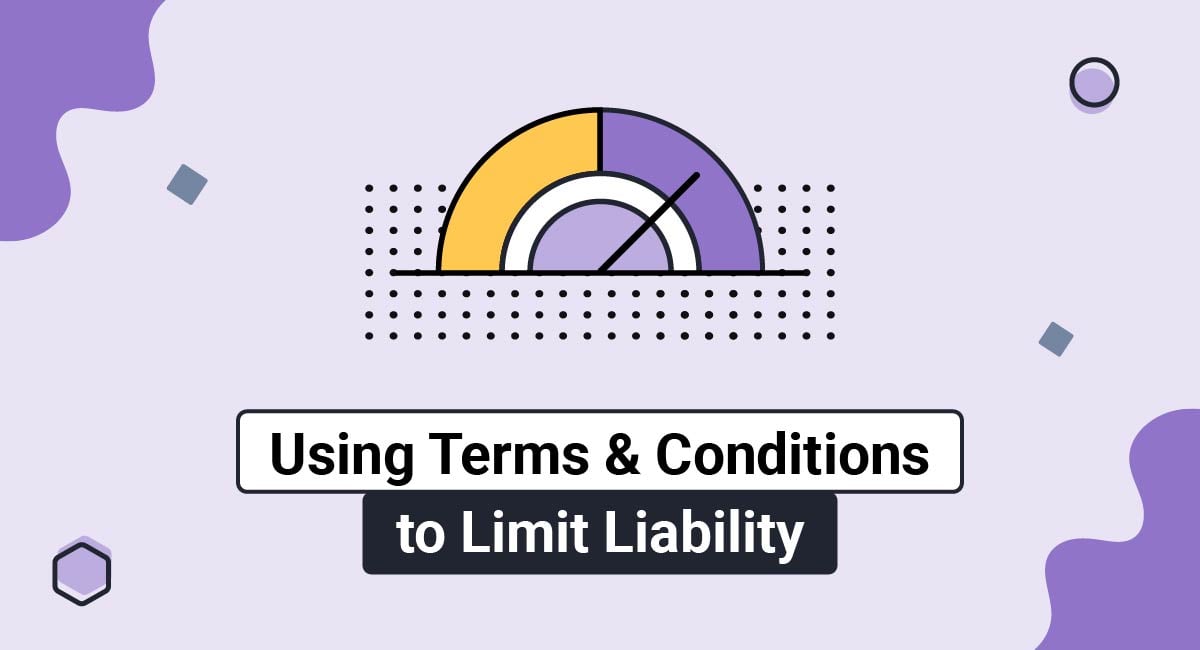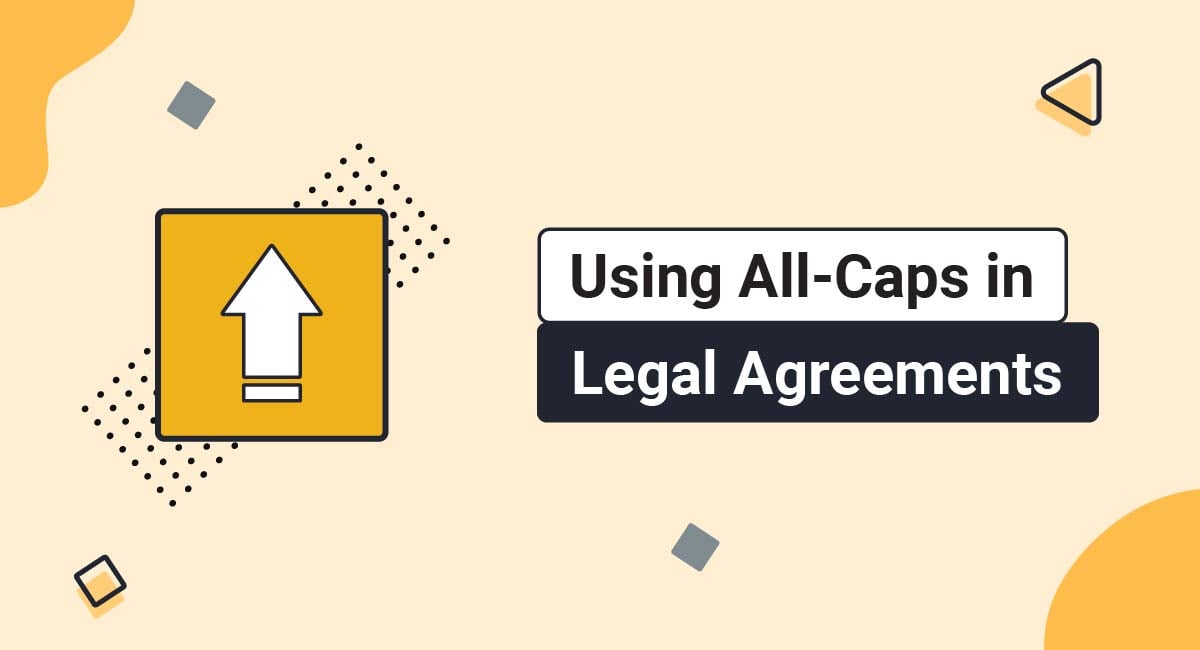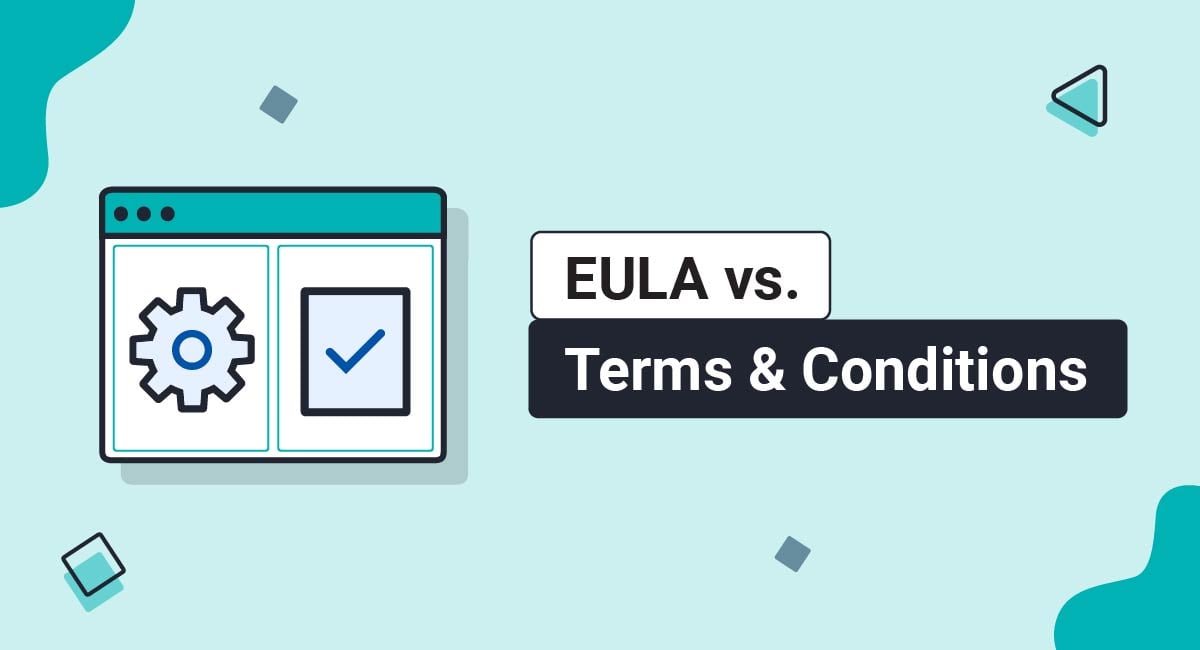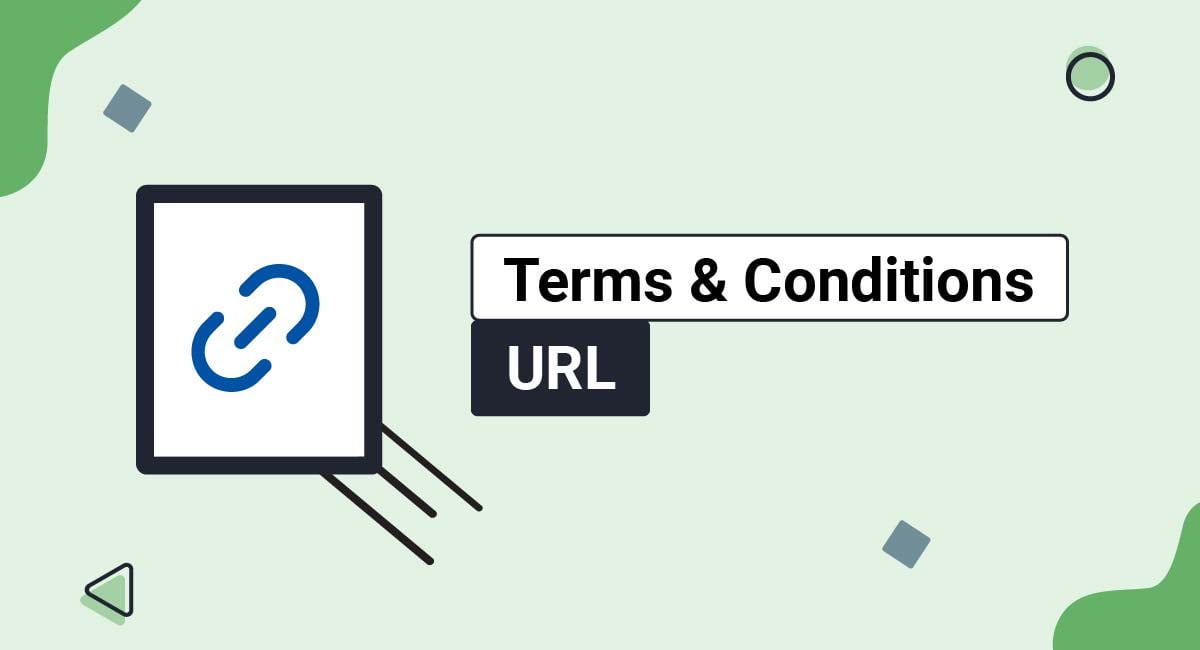When you design that new hot app or offer services on your websites, look for a Terms & Conditions agreement to protect your business.
Think of the Terms and Conditions agreement as the ground rules for users to using your website or app.
This legal agreement the sets rules and guidelines to protect users' data, prevent abuse, and protect you, as the developer of a website/mobile app, and your company from liability.
This article will show you how you can use your Terms agreement to help limit your liability.
Our Terms and Conditions Generator makes it easy to create a Terms and Conditions agreement for your business. Just follow these steps:
-
At Step 1, select the Website option or the App option or both.
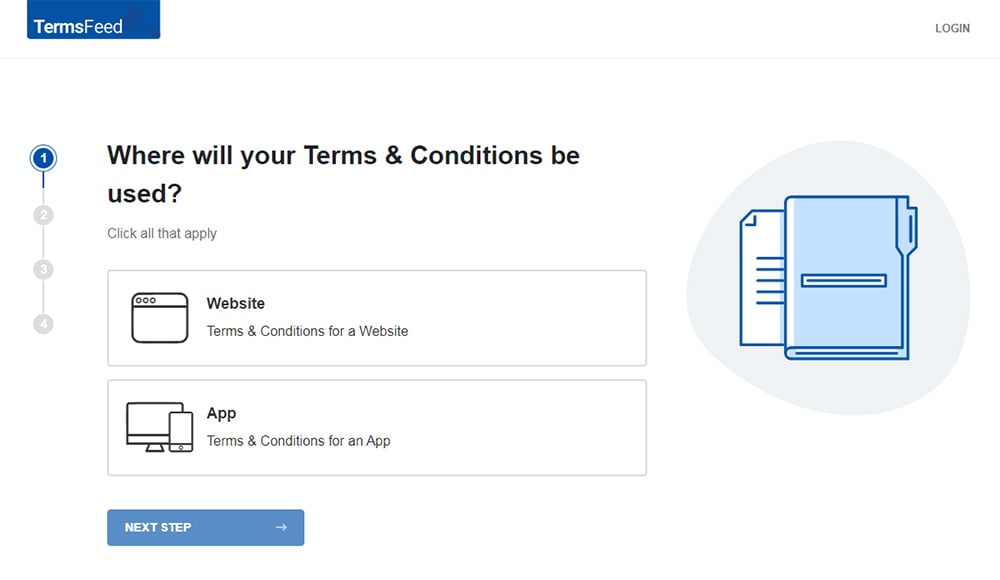
-
Answer some questions about your website or app.
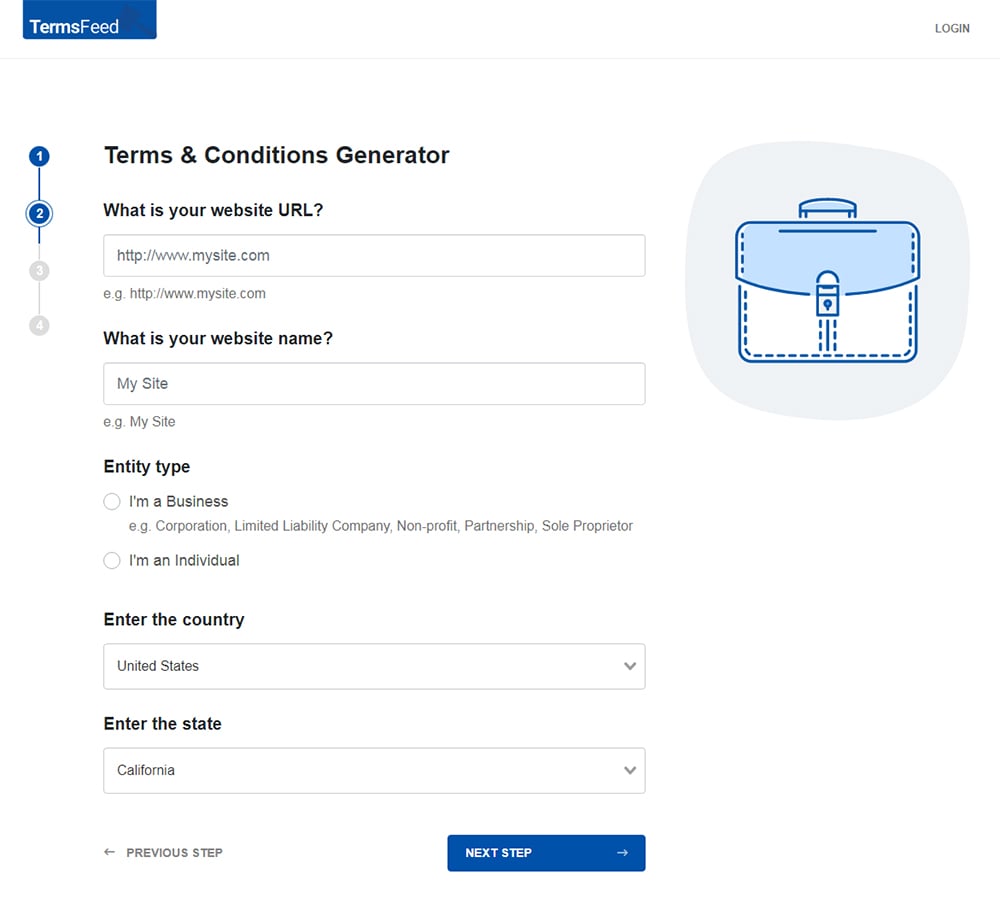
-
Answer some questions about your business.
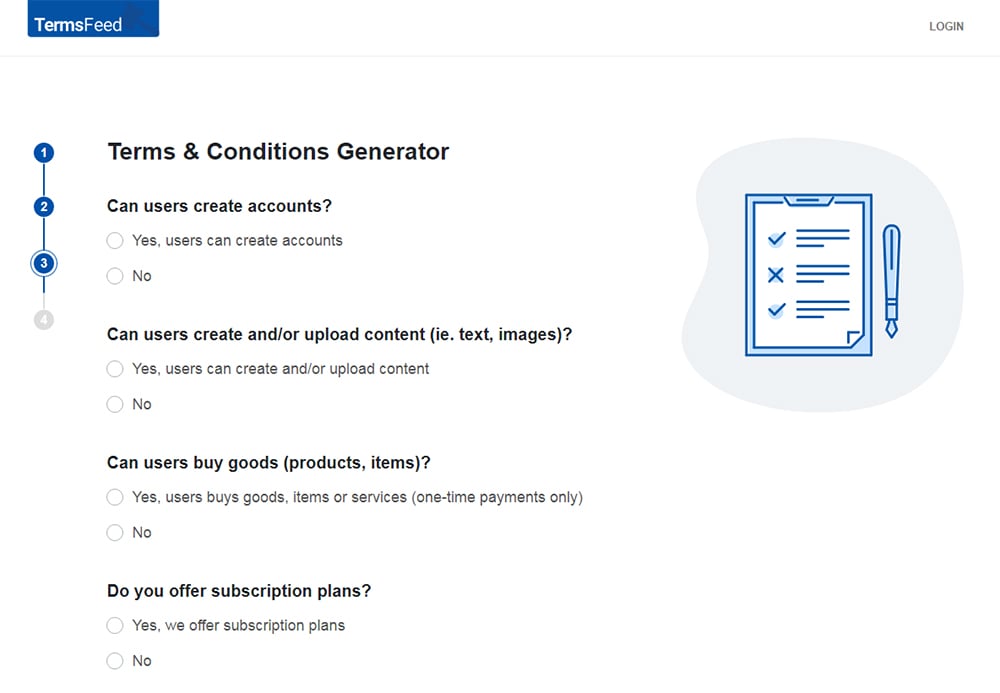
-
Enter the email address where you'd like the T&C delivered and click "Generate."
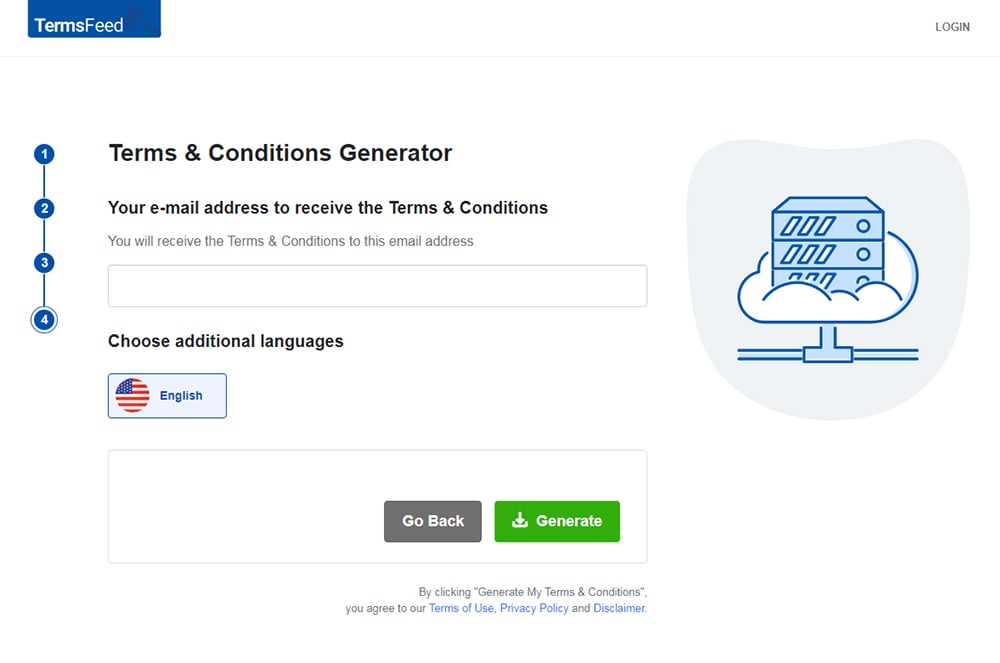
You'll be able to instantly access and download the Terms & Conditions agreement.
- 1. What is a Terms & Conditions Agreement?
- 2. What Information Does a Terms & Conditions Agreement Include?
- 3. Why Do You Need a Terms & Conditions Agreement?
- 4. What's the Difference Between a Terms and Conditions Agreement and a Privacy Policy?
- 5. What Clauses Help a Terms & Conditions Agreement Limit Your Liability?
- 5.1. Liability Disclaimer
- 5.2. Disclosure of Any Subscription or Other Fees
- 6. How to Display and Get Agreement to a Terms and Conditions Agreement
- 7. Summary
What is a Terms & Conditions Agreement?
A Terms and Conditions agreement (known as Terms of Use or Terms of Service) is a legal document that will define your duties as the provider of the online service and set out your rules and expectations for your users.
Depending on the nature of your website and/or mobile app, this agreement can include details about things such as subscription fees (if your app is a SaaS), auto-renewal fees, and other important information for users.
What Information Does a Terms & Conditions Agreement Include?
Specifically, this agreement will often address:
- User rights and responsibilities, including what's characterized as misuse
- Payment details, if applicable
- Restricted conduct for users
- Opt-out provisions
- Notice of modification of any terms
- Limits to liability and damages incurred
The contents of your agreement will depend primarily on your industry and its best practices.
For example, if you do not intend to have a paid subscription option for your website/app and all services that you provide through the website/app are free or just presentational only, you don't need terms regarding payments.
Your Terms and Conditions agreement should be individualized. The terms required of Tinder, YouTube, and other well-known websites may not necessarily good for your business.
This is why you shouldn't copy-paste a legal agreement from another website.
At a minimum, in this agreement, you likely want to define some key terms, define what constitutes misuse, give procedures for users how to cancel their accounts (if accounts are permitted), and state any limits on liability and damages.
Why Do You Need a Terms & Conditions Agreement?
A Terms and Conditions agreement will help you limit your liability, as well as maintain control over your app or website by letting you set out rules and requirements for using it. You can exert your right to ban abusive users who don't follow your rules, and can disclaim liability for things such as website downtime or malware found in your app.
This kind of legal agreement empowers your business to better control the use of your website or mobile app. In it, you can include who you allow to access it (limiting it to an age group, for example) and what people are allowed to do with it.
For example, here's how Tinder includes limitations on use:
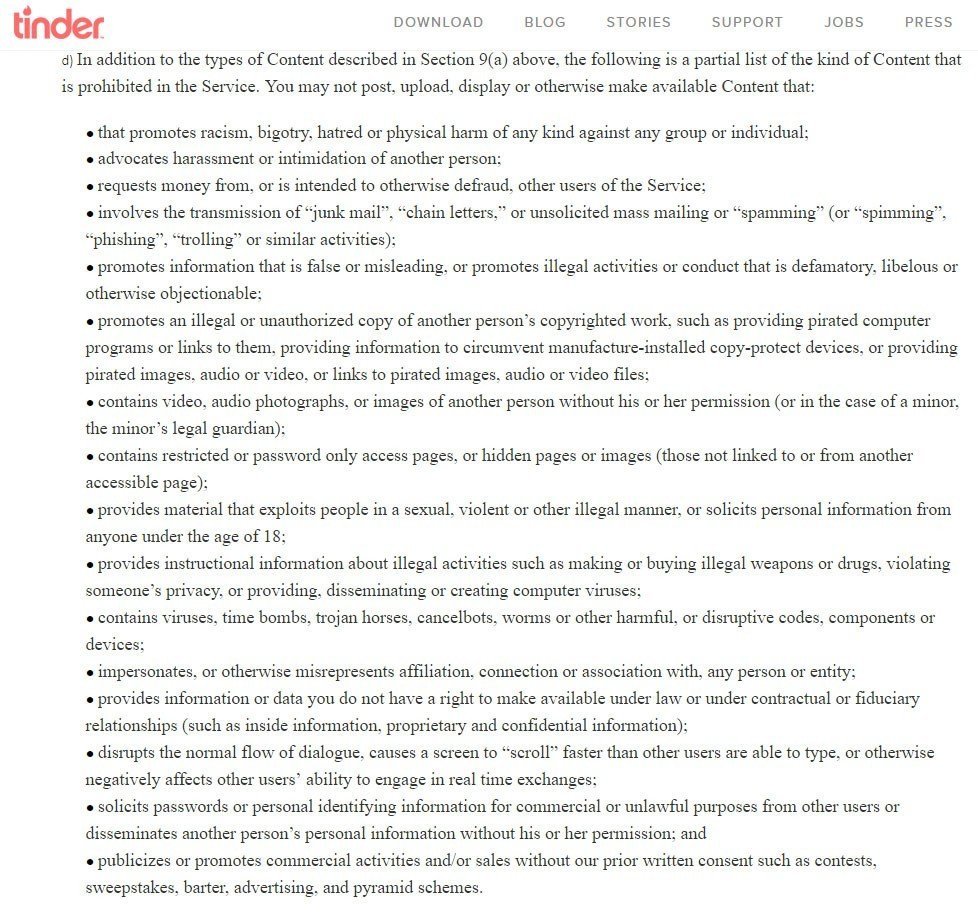
Without these guidelines and these rules, you may not have grounds to enforce your standards and that can leave you and your company vulnerable to liability.
What's the Difference Between a Terms and Conditions Agreement and a Privacy Policy?
A Privacy Policy is a separate agreement that you need to have if you collect personal information from users.
However, a Privacy Policy can also be contained within the Terms and Conditions agreement's text or it can reference through the Terms and Conditions agreement's text through a link.
If your website/app collects personal information from users, you likely need to include a Privacy Policy.

A Privacy Policy agreement is different than the Terms and Conditions one. This agreement outlines why a business collects the information and how it will use the information.
Clauses related to privacy or a reference to the Privacy Policy can prevent information misuse by abusive users.

If you use the personal information of users correctly as defined within your own Privacy Policy, it can prevent some of your abusive users from claiming that you abused their personal information.
What Clauses Help a Terms & Conditions Agreement Limit Your Liability?
The following clauses are specifically geared towards limiting your liability.
Liability Disclaimer
Your Terms agreement should have a basic, standard disclaimer of liability. This will basically state that your site or service is offered "as is" and that you are not to be held responsible for things such as third party links, faulty information or omissions, and other things that may cause issues for your site or app users yet are not quite under your control.
Here's an example:
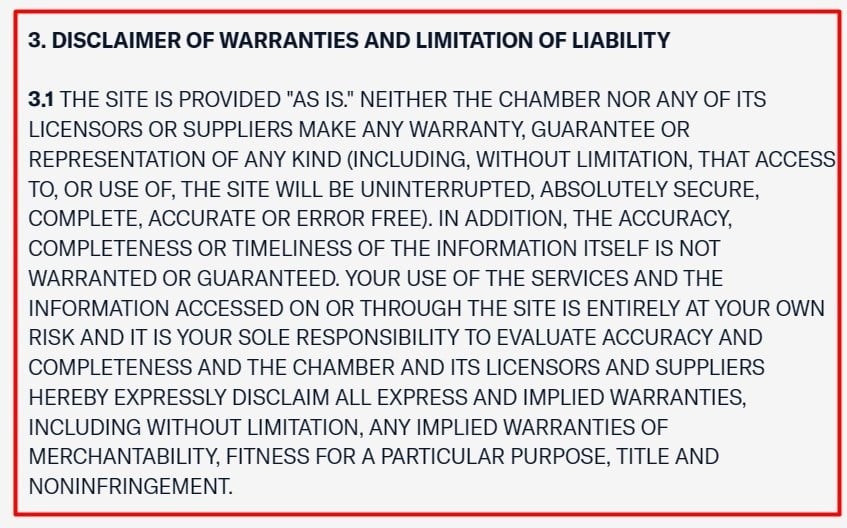
You can also use a clause like this to limit your liability to a certain amount of damages.
Here's an example of a clause that notes specific damage amounts:
![]()
Disclosure of Any Subscription or Other Fees
Automatic renewal and subscriptions can be problematic for SaaS businesses - especially if you do business in a jurisdiction that discourages this practice.
If your service address in-app purchases or subscriptions renewal, adding key clauses related to your subscription plans or renewals can be essential to preventing liability.
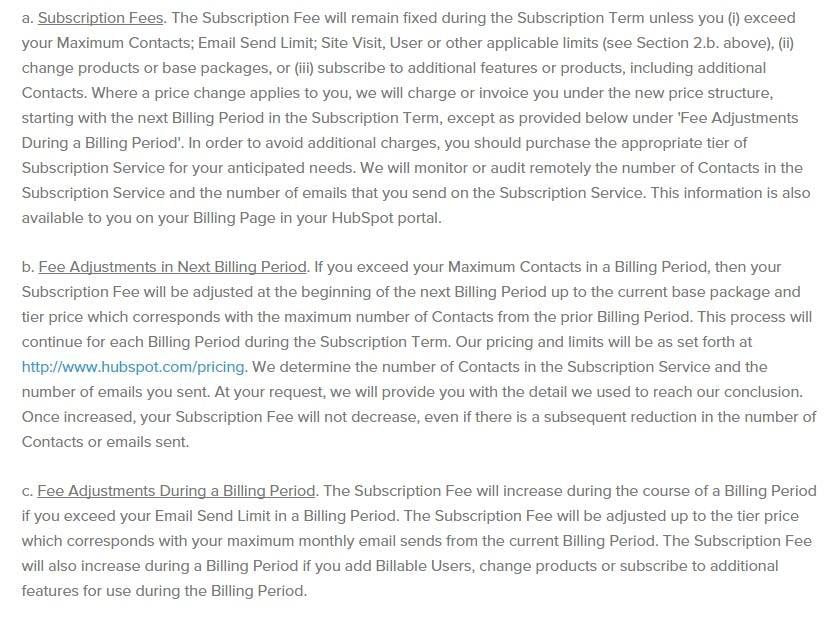
In the U.S., a number of states have laws controlling auto-renewal of subscription-based services.
Under these laws, there cannot be any automatic charges on credit cards, debit cards or bank accounts without a consumer's explicit consent.
When orders are renewed, the terms must be "clear and conspicuous" and presented in a larger font.
If you include an auto-renewal in your services, your clauses related to this or your Terms and Conditions agreement should be in large or contrasting type and have an embellishment that draws attention to them.
The clauses in your agreement should also include how the consumer can cancel the subscription.
If you're promoting a subscription service be sure to:
-
Clearly define any "Free Trial" periods.
Consider emailing consumers to remind them when their free trial is ending. This could provide further assurance against liability.
-
Present clear billing terms.
Whether the charges occur monthly, quarterly or yearly, state so in your Terms and Conditions agreement.
You can also include the amount charged or at least provide a link in agreement with the different subscription plans you maintain.
-
Include an opt-out or cancellation policy.
You need to give consumers an option to cancel their subscription, especially if you offer a free trial first.
This also needs to be clear and conspicuous. You could try to highlight it in your Terms and Conditions.

How to Display and Get Agreement to a Terms and Conditions Agreement
It's a best practice to display a link to your Terms agreement in the footer of a website or located under an "About Us" type of menu.
Here's how a link can look in a site footer:
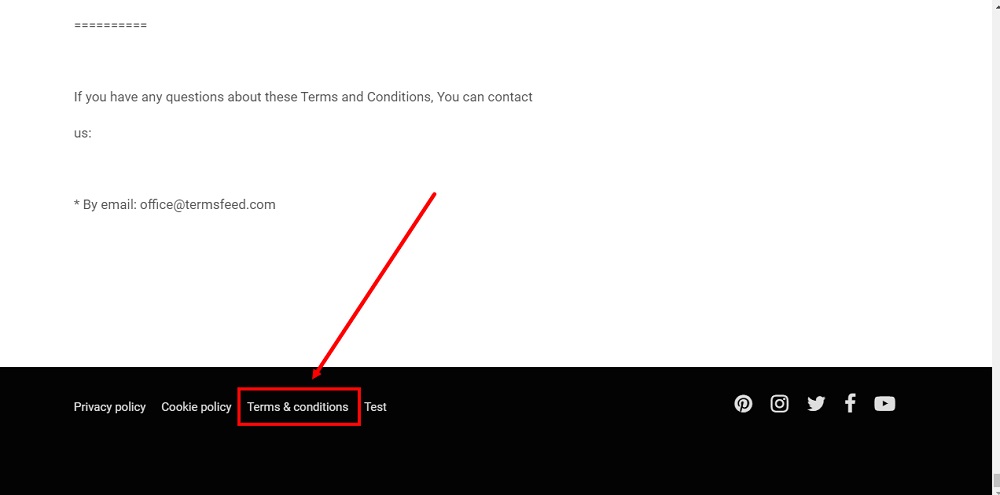
You can also include a link to your Terms when a user signs up on your website or app, and can use an "I Agree" checkbox here to get users to agree to it as well.
Here's an example:
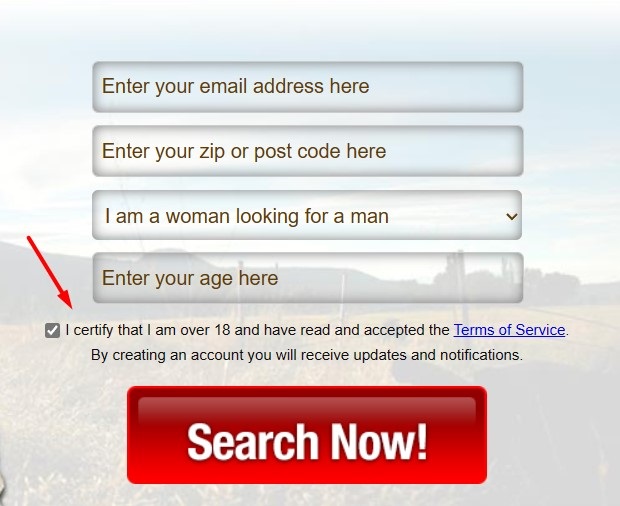
If a user checks that box and moves ahead, it's normally assumed the terms were read and understood, and consent will be given. This will help limit your liability by making users be bound to your terms.
Since you'll not have a cause of action or grounds for other decisions without the Terms and Conditions agreement being accepted by your users, make sure to always get users to agree to the terms.
A Central District of California case, Friedman et al v. Guthy-Renker, LLC, helped shed light on this topic.
In this case, a set of terms lacked links to agreements. Users who signed up for the subscription under those terms were not held to their account charges and Guthy-Renker was ordered to compensate them.
However, users who set up accounts under the later version were held accountable because that version included links to the agreement and made the agreements accessible.
When users clicked "Agree to Terms", the court ruled they were held to those provisions.
In contrast, links stating "Learn More" or "More Plan Details" may not be considered adequate.
In another California case, Savetsky v. Pre-Paid Legal Services, the links cannot be merely informational. It must be clear that the links lead to terms that control the transaction.
While a link's text as "Terms & Conditions" is helpful, the court found "Learn More" to be misleading.
When you compile links to your Terms and Conditions (or any other legal agreements), consider sticking with the common legal titles for these documents: "Terms & Conditions", "Privacy Policy" and "Membership Agreement" when the latter applies.
These agreements link a transaction to the rules that apply to it. When you try to simplify it with "Learn More", courts are likely to see that as an attempt to educate--not make a solid contract with your users.
Summary
In summary, Terms and Conditions can keep the use of your website and mobile app within your control. The agreement can enforce duties, responsibilities, and rights for all parties connected.
Include clauses that directly address liability limitations, and disclose important information such as how you bill users.
Display your Terms agreement in your site footer and elsewhere on your site or app such as when a user creates an account, and always use a checkbox to get consent from users to be bound by the terms of your agreement.

Comprehensive compliance starts with a Privacy Policy.
Comply with the law with our agreements, policies, and consent banners. Everything is included.
